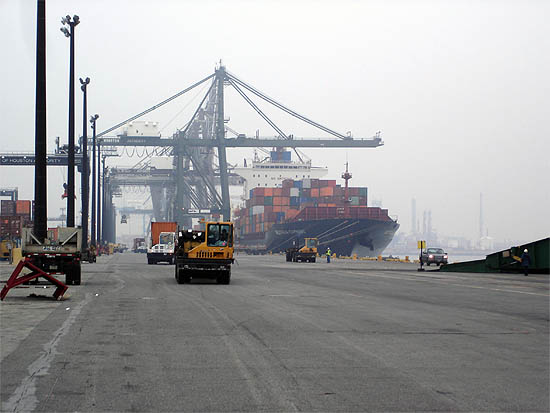The Container Port of Houston
by Andrew Boyd
Today, working on the dock of the bay. The University of Houston's College of Engineering presents this series about the machines that make our civilization run, and the people whose ingenuity created them.
At times the scene was frightening. I've seen shipping containers many times before — those metal crates that look like truck trailers. But never flying at me through the air.
[audio of container being offloaded from a ship]
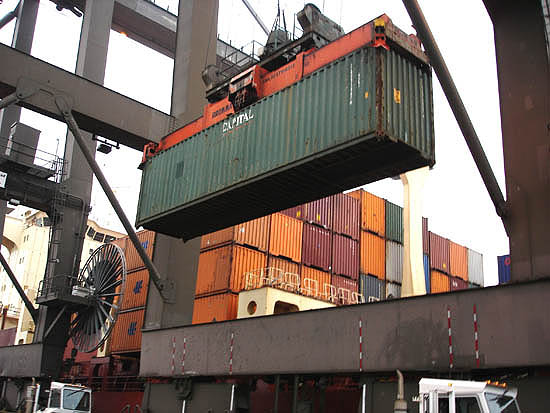
A crane twelve stories high latched onto the top of a thirty ton container, then whisked it over the side of the ship, dropping it onto a waiting truck. Just as quickly, back it went to get another. Good crane operators make the round trip in a little over a minute and a half; less efficient operators take an extra thirty seconds. It's a huge difference in a business that's all about keeping cargo ships moving.
Container ports are a fascinating exercise in engineering. The basic activities are simple enough. But the sheer number of containers is a challenge. Imagine thousands upon thousands of containers moving every which way as ships, trucks, and trains are loaded and unloaded. That's enough to keep things exciting all by itself. But there's a lot more that goes on behind the scenes.
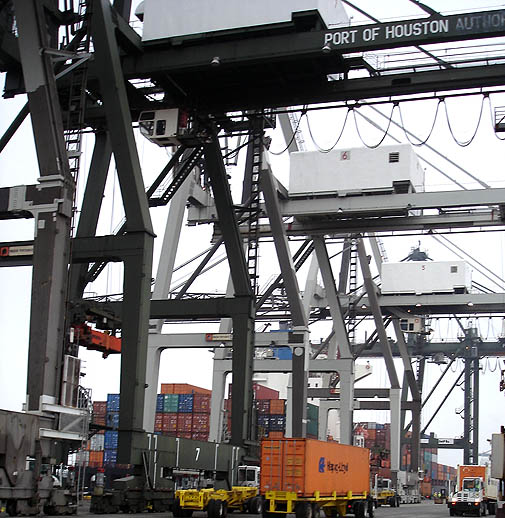
My escort through Houston's container port was Michael Blackwell, Manager of Container Operations for the Shippers Stevedoring Company. He shared with me all that's involved.
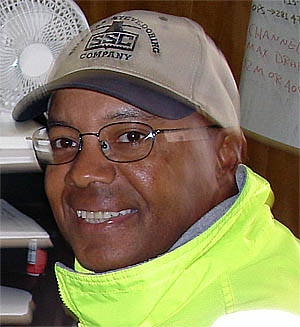
Planning is vital. Gangs of longshoremen — and they're really called gangs — must be contracted for each ship that docks. As ships get close to port, they communicate what's on board to the stevedoring company: what's in each container and exactly where everything's stacked. And, of course, there's the flip side of the equation: what containers need to be loaded and where they'll be stowed. Proper stowing keeps the weight balanced so the ship is seaworthy. It also ensures that the right containers are easy to get to when the ship reaches its next port.
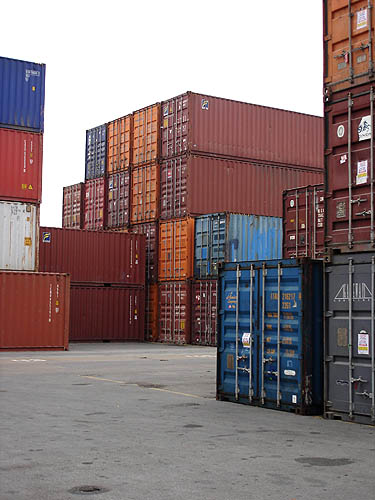
The world's biggest ships can carry over fifteen thousand containers. There can be many times that number in the yard. And at every moment, the location of every container needs to be accounted for. If just one is lost or misplaced, it sets off a whole chain of events. Needless to say, computers are a necessity. The papers and sticky notes used twenty years ago are out, replaced by three dimensional color graphics of ships and their cargo.
And it's no surprise that security is tight. It's been that way since the 9/11 terrorist attacks. Customs officials are now everywhere, inspecting whatever they want, whenever they want. They're another part of the amazing puzzle we call a container port — a puzzle put together with tons of ingenuity, and just a dash of mayhem.
I'm Andy Boyd at the University of Houston, where we're interested in the way inventive minds work.
For a related episode, see 2094, The Box.
Thanks to Lisa Whitlock and the Port of Houston Authority for providing clearance allowing me access to the container port. Thanks, too, to Don Johnson of the Shippers Stevedoring Company for allowing me to observe the operation of the shipyard. Charles Lewis and Jody Doucet provided valuable information during my visit. Special thanks to Michael Blackwell, who took time to show me the yard and answer my many questions.
Pictures by E. A. Boyd.
